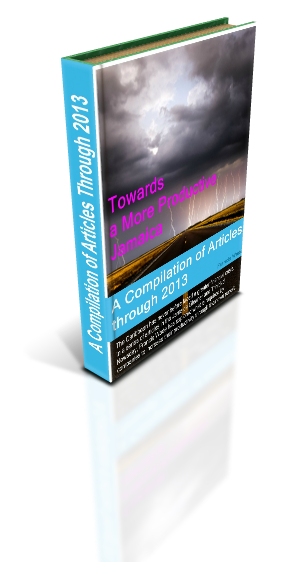I just had an article published in Trinidad’s Newsday newspaper that highlighted the reasons why poor time management skills routinely mash up the best made strategic plans.
How to Ensure a Lack of Time Doesn’t “Mash Up” Your Strategic Plan
As we enter the post-festival season, many local companies embark on fresh annual and quarterly strategies that just won’t succeed. Most executives will blame “the culture” but they are mistaken: it has more to do with their ineffective use of time.
If you are an executive you may relate to the problem. During the strategic planning retreat, brainstorming sessions generate a lot of new ideas. As the activities add up you feel a subtle but distinct discomfort, especially if you happen to be more experienced. You sense that everything on the list simply cannot get done. Furthermore, you mute your own objections because of the strong pressure to be a “team player.”
The best companies determine the cost of each strategic project plus the overall budget when they do their strategic planning. The rare few, according to McKinsey & Co.’s Bevvins and De Smet, will go further and complete a time budget. Why is it needed?
Most company executives focus on financial budgets first because they believe that cash is their scarcest resource. The new strategic plan must be made practical by selecting activities with the highest ROI – a widely accepted technique.
However, near the end of a retreat, tired executives rarely go the next step, asking themselves how much time needs to be budgeted for each new activity. In the months to come, they treat time as if it’s an infinite resource. This sets their strategy up for failure from the beginning, causing the discomfort I mentioned earlier. The problem isn’t a lack of time, however. It’s a deficit of skill.
Most will turn to “time management” skills for the answer, without understanding that it’s a misnomer: time cannot really be managed. Instead, they need to learn to manage a “time demand,” defined as an individual, internal commitment to complete an action in the future. This distinction is foreign to many executives in Trinidad and beyond, but it lies at the heart of time budgeting.
As a manager you may possess a secret – your methods for managing time demands are self-taught, starting around the time you took the Common Entrance or SEA. You did so early on, giving you an edge that has played an important role in your academic, career and organizational success.
However, being better than the average Caribbean person is no great accomplishment. The data I have gathered from regional workshops shows why individual productivity is low, even as the macro-economy might be growing. With respect to time budgeting, our skills are lacking at all levels of the enterprise, but here are four things that can be done to instill a new level of rigour in the C-Suite while executing your annual strategy.
1. Gain an appreciation of your current individual and collective skills at managing time demands. Do so by completing an informed self-assessment illuminating your methods and their relationship to world-class standards. You’ll probably find some critical behaviours you merely do each day, but have never thought about before. Your profile reveals the salient gaps.
2. Create improvement goals and a plan. These are easy to build based on the prior step. If you were well-trained in order to do a self-assessment then you should be itching to close the gaps. The temptation will be to try to change too many, too quickly. Resist it and go for small steps with lots of support.
3. Collect time data. Most professionals have only a gut knowledge of how long things take. The chances are high that you have never tracked your personal time as the McKinsey authors and also Peter Drucker, the management guru, recommend. For planning purposes, this discipline can be as important as tracking expenditures. Data should be collected on a programme basis also, so that teams in your firm can determine how to make successful project plans.
4. Manage packed calendars. The gradual removal of administrative assistants from C-Suite staff complements has pushed a number of new time demands into your lap. The problem isn’t about fetching coffee, however. Now, you are forced to manage the all-important activity of planning your time-starved calendar using technology that changes from day to day.
The McKinsey research shows that the effective executive makes full use of administrative assistance to coordinate demanding schedules. This helps them to preserve time devoted to “the flow state” – their most productive times spent alone doing their best work.
In the absence of this knowledge and the supporting mechanisms, it’s no surprise that many strategic plans amount to little more than overblown wish-lists. Unless local companies take their executives’ time demand management skills seriously, it’s safe to expect disappointments at this time next year.
Francis Wade is a management consultant and author of Perfect Time-Based Productivity. To receive a free compilation of past columns, send email to columns@fwconsulting.com




